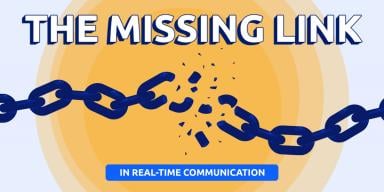
Due to the Covid-19 pandemic, networking in-person has become increasingly difficult. During these times when being 6 feet apart is the norm, networking has been more present online. This has limited the ability for chambers of commerce and professional associations to host speed networking events to allow its members to grow their connections quickly and efficiently.
What is Speed Networking?
Speed networking is a structured networking method that allows participants to meet many people in a short amount of time. These short, time structured meetings usually happen one-on-one for brief informational exchanges. After the event, individuals will have the choice to decide who they will follow up with.
It is a good way to meet potential business contacts, as well as, introducing yourself to a large cohorts of people and explain what you are looking for. You can find potential new business contacts, clients, lead, or jobs.
These events are usually seen in either professional chambers of commerce or associations, as well as, college and university campuses.
A round-robin format is often used in speed networking, with a host that indicates the start and stop time of each “round.” Within each round, a participant will meet another participant, one-on-one, and introduce themselves. Around the halfway point of each round, the second participant will then be able to introduce themselves. This process repeats for the remainder of the event, or until you have met every participant.
Similarity and Differences to Traditional Networking

Similarities
The main similarity speed networking has with regards to traditional networking is meeting new people. They both allow you to reach out to other professionals and build relationships with them. They can help you either find leads, jobs, clients, or help you expand your professional network.
Differences
There are more differences than similarities between speed networking and traditional networking. Speed networking employs a fast-paced event setting where all parties are actively looking to build professional relationships. Traditional networking often relies on one party reaching out to another and introducing themselves, hoping to elicit a positive response and reciprocate.
Traditional networking has been trending towards online interactions, yet most speed networking events are still based in-person. Unlike traditional networking, speed networking usually requires a host who is solely there to time and coordinate the event to ensure it goes smoothly.
The most important difference is that in a speed networking event, you can meet many more people in a short amount of time, to build your network more efficiently, as compared to traditional networking.
How is Virtual Speed Networking Different?

Virtual speed networking does sacrifice the ability to meet people in-person. However, it brings much more meaningful communication to the table. First of all, it brings a level of accessibility unavailable to in-person speed networking event. There are no borders, which allows people to join internationally. It lets you build a more international and diverse network.
Also, it does not require a host to time the interactions and ensure that people are giving adequate time to the other participant to introduce themselves. Virtual speed networking also allows the program to match people efficiently to ensure that everyone can network with each other.
With a virtual speed networking event, you no longer need to rent out a large event space and provide catering to participants. It reduces costs for both the host of the event, who can also transfer the savings to participants. However, to properly and efficiently host one of these events, you would need a virtual speed networking platform.
Glue Up’s Virtual Speed Networking Solution

Glue Up is a leading provider in the event industry that created an efficient speed networking solution. It lets professional associations, chambers of commerce, and other professional communities host speed networking events virtually!
The solution includes sharing virtual business cards, taking meeting notes on each participant you network with, and scheduling a meeting after the event. Plus, other features allow you to have a virtual networking experience that recreates the meaningful aspects of meeting face-to-face and connect without any of its limitations.
If you’re interested in learning more about Glue Up’s speed networking solution or other event solutions to help you create engaging events and webinars, book a demo of our all-in-one platform with us today. We will show you how our platform has helped organizations like yours run amazing events and make smarter decisions.

![Advantages Of Paperless Board Meetings [+ Tips] Advantages Of Paperless Board Meetings [+ Tips]](/sites/default/files/styles/all_blogs_block_img_384x192/public/image_1578.png?itok=Ah-vnnvq)

![PayPal for Nonprofits: A Guide to Accepting Donations and Managing Your Money [with alternatives] PayPal for Nonprofits: A Guide to Accepting Donations and Managing Your Money [with alternatives]](/sites/default/files/styles/all_blogs_block_img_384x192/public/image_1807.png?itok=ujDAsFNj)